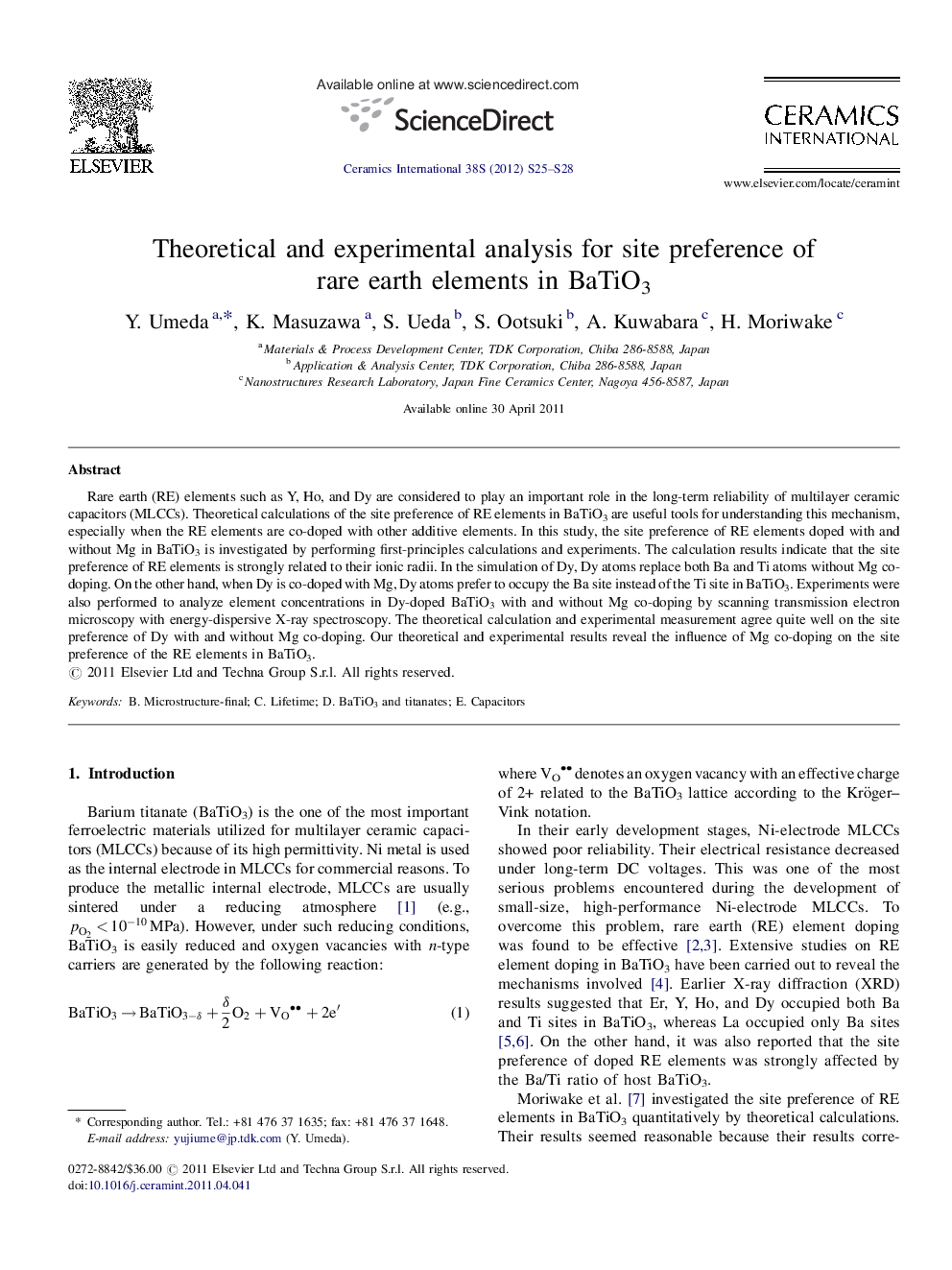| Article ID | Journal | Published Year | Pages | File Type |
|---|---|---|---|---|
| 1462022 | Ceramics International | 2012 | 4 Pages |
Rare earth (RE) elements such as Y, Ho, and Dy are considered to play an important role in the long-term reliability of multilayer ceramic capacitors (MLCCs). Theoretical calculations of the site preference of RE elements in BaTiO3 are useful tools for understanding this mechanism, especially when the RE elements are co-doped with other additive elements. In this study, the site preference of RE elements doped with and without Mg in BaTiO3 is investigated by performing first-principles calculations and experiments. The calculation results indicate that the site preference of RE elements is strongly related to their ionic radii. In the simulation of Dy, Dy atoms replace both Ba and Ti atoms without Mg co-doping. On the other hand, when Dy is co-doped with Mg, Dy atoms prefer to occupy the Ba site instead of the Ti site in BaTiO3. Experiments were also performed to analyze element concentrations in Dy-doped BaTiO3 with and without Mg co-doping by scanning transmission electron microscopy with energy-dispersive X-ray spectroscopy. The theoretical calculation and experimental measurement agree quite well on the site preference of Dy with and without Mg co-doping. Our theoretical and experimental results reveal the influence of Mg co-doping on the site preference of the RE elements in BaTiO3.
